2.2. Creating Acronis Storage Clusters¶
To create an Acronis Storage cluster means to create a cluster on one (first) node, then populate it with more nodes.
Important
To be able to create a cluster, you will need to assign a storage role to a node’s network interface.
2.2.1. Creating the Cluster on the First Node¶
Open the NODES screen and click a node in the UNASSIGNED list.
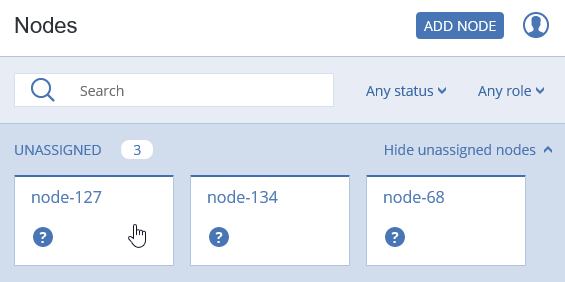
On the node overview screen, click Create cluster.
In the Cluster field, type a name for the cluster. The name may only contain Latin letters (a-z, A-Z), numbers (0-9), underscores (“_”) and dashes (“-”).
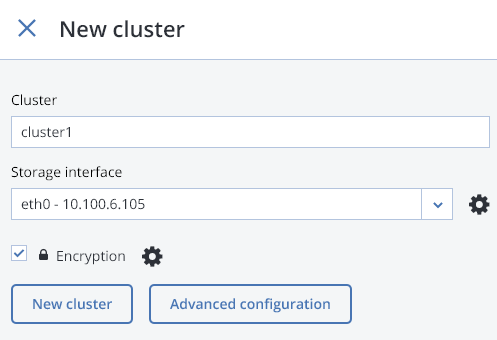
Make sure a configured network interface with a storage role is selected from the Storage interface drop-down list.
Note
If the network was not previously configured, click the cogwheel icon and, on the Network Configuration screen, configure a storage role for a network interface.
If required, enable data encryption. To do this, check the Encryption box (see Managing Tier Encryption) and proceed to create the cluster. Encryption will be enabled for all tiers by default.
To enable encryption for particular tiers, click the cogwheel icon to open the Encryption Configuration panel, select tiers to encrypt, and click Done.

Note
You can later disable encryption for new chunk services (CS) on the SETTINGS > Advanced settings panel.
Click New cluster to have Acronis Storage assign the roles to disks automatically. Alternatively, click Advanced configuration to assign the roles to each drive manually (see Assigning Disk Roles Manually).
You can monitor cluster creation progress in the HEALTHY list of the NODES screen. The creation might take some time depending on the number of disks to be configured. Once the automatic configuration is complete, the cluster is created.
2.2.2. Adding Nodes to Cluster¶
To add an unassigned node to a cluster, do the following:
On the NODES screen, click an unassigned node.

On the node overview screen, click Join cluster.
Make sure a configured network interface with a storage role is selected from the Storage interface drop-down list.
Note
If the network was not previously configured, click the cogwheel icon and, on the Network Configuration screen, configure a storage role for a network interface.
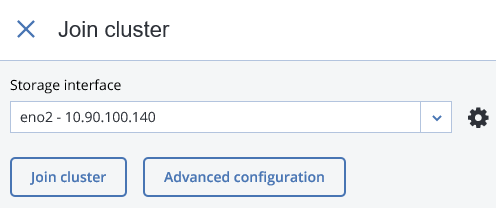
- Click Join cluster to have Acronis Storage assign the roles to disks automatically and add the node to the current cluster. Alternatively, click Advanced configuration to assign the roles to each drive manually (see Assigning Disk Roles Manually).
2.2.3. Assigning Disk Roles Manually¶
If you clicked Advanced configuration while creating a cluster or adding nodes to it, you will be taken to the list of drives on the node where you can manually assign roles to these drives. Do the following:
On the Join cluster or New cluster panel, select a drive or check multiple drives in the list and click Configure.
On the Choose role screen, select one of the following roles for the disk:
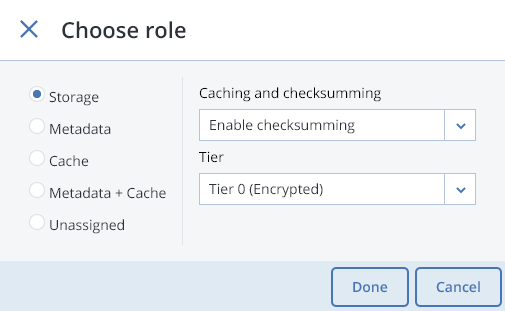
Storage. Use the disk to store chunks and run a chunk service on the node. From the Caching and checksumming drop-down list, select one of the following:
Use SSD for caching and checksumming (available and recommended only for SSD).
Data caching improves cluster performance by placing the frequently accessed data on an SSD.
Data checksumming generates checksums each time some data in the cluster is modified. When this data is then read, a new checksum is computed and compared with the old checksum. If the two are not identical, a read operation is performed again, thus providing better data reliability and integrity.
Enable checksumming (better reliability). Checksumming is available for both SSD and HDD.
Disable checksumming (better performance).
With this role, also select a tier from the Tier drop-down list (see Understanding Storage Tiers in the Acronis Storage 2.0 Installation Guide).
Note
If the disk contains old data that was not placed there by Acronis Storage, the disk will not be considered suitable for use in Acronis Storage.
Metadata. Use the disk to store metadata and run a metadata service on the node.
Cache. Use the disk to store write cache. This role is only for SSDs. To cache a specific storage tier, select it from the drop-down list. Otherwise, all tiers will be cached.
Metadata+Cache. A combination of two roles described above.
Unassigned. Remove the roles from the disk.
Note
Both the System and Metadata roles can be assigned to the same disk with capacity of 100GB or higher—preferably to an SSD. Assigning both these roles to an HDD will result in mediocre performance suitable only for cold data (e.g., archiving).
Click Done.
Repeat steps 1 to 3 for every disk you want to be used in the Acronis Storage cluster.
Click NEW CLUSTER or JOIN CLUSTER. On the Configuration summary screen, check the number of disks per each configuration category.
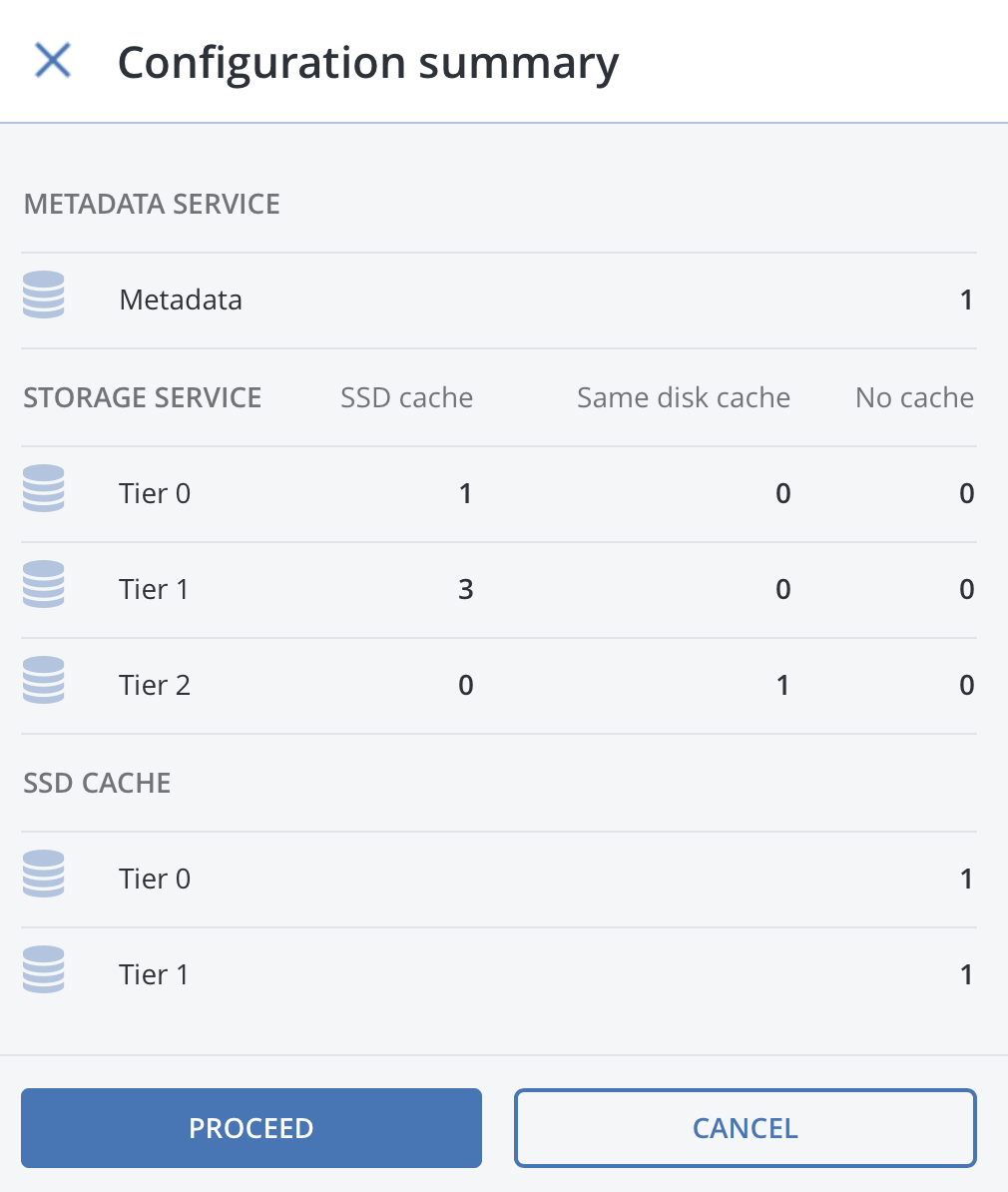
Click PROCEED. You can monitor disk configuration progress in the HEALTHY list of the NODES screen.
